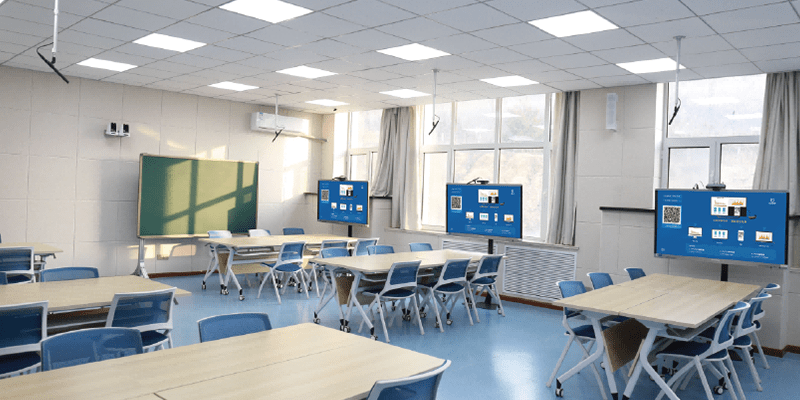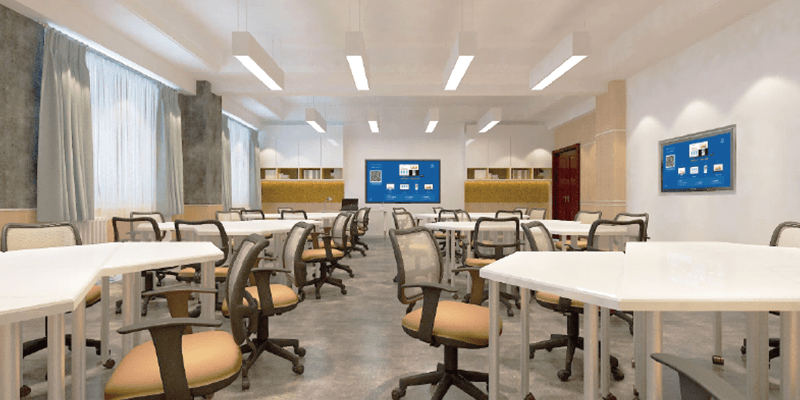Smart Classroom – The structure and main components of a smart classroom

The platform architecture of the smart classroom consists of seven parts: device layer, portal layer, application layer, service layer, data layer, foundation layer, and network layer.
Device layer
The smart classroom supports multiple device connections for device connectivity. The equipment mainly includes a series of smart classroom devices such as electronic whiteboards, electronic blackboards, laptops, tablets, network cameras, printers, mobile phones, monitors, etc. In addition, it also includes peripheral auxiliary equipment for smart classrooms, such as charging cabinets, network devices, backup power supplies, etc. We recommend the Bijie wireless screen projector for smart classrooms, which not only has functions such as whiteboard annotation, information publishing, and screen mirroring control, but also supports group pushing and pulling to help students learn efficiently.

Portal layer
The education cloud service website can support users to log in on terminals such as e-books, mobile phones, and computers through a unified login service. After logging in, users can enjoy various services and integrate various related functions such as education resource management, home school contact management, school teaching management, and account service management on the portal website.
application layer
The main functions of a comprehensive smart classroom are designed according to the principles of modularization and independence, including remote education system, interactive teaching system, educational application store, classroom intelligent control, teaching quality evaluation system, cloud book city, teacher online lesson preparation system, and intelligent reading system.

Service layer
Provide relevant basic services that support application layer operations, including data mining services, identity authentication services, database services, multimedia on-demand live streaming services, full-text retrieval services, and file services.
Data layer
The smart classroom platform is supported by multiple databases, ensuring the massive, reliable, robust, and secure data of the platform, including user databases, teaching system databases, resource databases, and evaluation system databases.
base layer
Basic cloud services include storage services, server services, and network connectivity services. The infrastructure supporting the smart classroom platform system can work stably in a cloud environment.
network layer
The basic network that the smart classroom platform relies on includes the networks involved in the platform, including 4G networks, 3G networks, 2G networks, wireless networks, wired networks, etc.